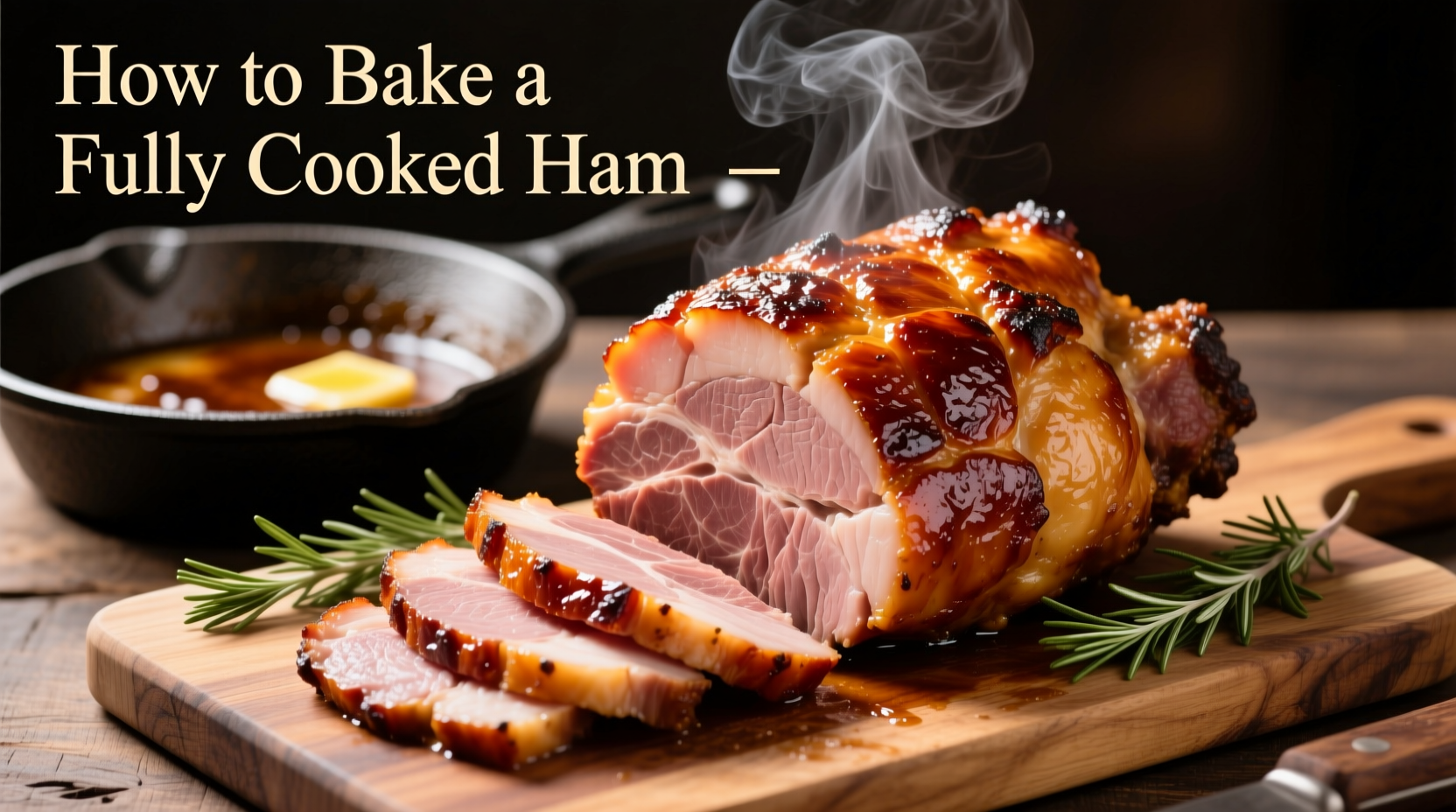Nothing says celebration like a perfectly baked ham, but many home cooks struggle with reheating fully cooked hams without drying them out. This comprehensive guide delivers professional techniques that guarantee moist, flavorful results every time—whether you're preparing a holiday centerpiece or weeknight dinner.
Understanding Fully Cooked Ham: What You Need to Know First
Before you even preheat your oven, understanding your ham's specific characteristics is crucial. "Fully cooked" means the ham has been heated to a minimum internal temperature of 147°F during processing, making it safe to eat cold. However, baking enhances texture and flavor. According to USDA Food Safety and Inspection Service guidelines, reheating fully cooked hams to 140°F ensures food safety while maintaining optimal moisture.
| Ham Weight | Reheating Time | Internal Temp |
|---|---|---|
| 5-7 lbs | 75-105 minutes | 140°F |
| 8-10 lbs | 120-150 minutes | 140°F |
| 11-14 lbs | 165-210 minutes | 140°F |
Essential Preparation Steps
Proper preparation sets the stage for baking success. Start by removing your ham from refrigeration 30 minutes before baking—this reduces temperature shock in the oven. Score the surface in a diamond pattern about ¼-inch deep, which allows heat and glaze to penetrate evenly. Place the ham flat-side down in a roasting pan with ½ cup of liquid (water, broth, or apple juice) to create steam and prevent drying.
According to Penn State University's Food Science Department, covering the ham with foil during initial baking retains 23% more moisture than uncovered methods. Remove the foil only when applying glaze to allow proper caramelization.
Perfect Baking Technique: Step-by-Step
- Preheat oven to 325°F—never higher, as excessive heat dries the exterior before the interior warms
- Place ham in roasting pan with liquid, cover tightly with foil
- Bake for 10-15 minutes per pound (use the lower end for spiral-cut hams)
- Apply glaze during the final 20-30 minutes of cooking
- Check internal temperature in multiple spots using a meat thermometer
- Remove from oven when thermometer reads 140°F
- Let rest 15-20 minutes before carving to redistribute juices
The critical temperature threshold of 140°F balances food safety with moisture retention. Exceeding 145°F significantly increases the risk of dryness, as documented in the Journal of Food Science's thermal properties research.
Mastering the Glaze: Timing and Techniques
Glaze application timing separates good hams from great ones. Apply glaze during the final 20-30 minutes of baking to prevent burning while allowing proper caramelization. For best results:
- Use a pastry brush for even application
- Apply in thin layers, allowing each to set before adding more
- Rotate the ham periodically for even glaze distribution
- Watch closely during the final 10 minutes to prevent burning
Popular glaze combinations include brown sugar with Dijon mustard, pineapple juice with cloves, or honey with orange zest. For spiral-cut hams, pour half the glaze into the pan bottom before baking, then brush the remainder on during the final stage.

Common Problems and Professional Solutions
Even experienced cooks encounter issues with baked ham. Here's how to troubleshoot the most frequent problems:
Dry Ham
Cause: Excessive oven temperature or insufficient resting time
Solution: Always bake at 325°F maximum and allow 15-20 minutes resting time before carving. If already dry, slice thin and serve with pan juices or a complementary sauce.
Burnt Glaze
Cause: Applying glaze too early or using excessive sugar
Solution: Apply during final 20-30 minutes and monitor closely. If burning occurs, cover loosely with foil while continuing to bake.
Uneven Heating
Cause: Improper placement in oven or inconsistent scoring
Solution: Rotate the pan 180 degrees halfway through baking and ensure even scoring depth across the entire surface.
Serving and Storage Guidelines
Serve ham immediately after the resting period for optimal texture. For best results, carve against the grain using a sharp knife. Leftovers should be refrigerated within two hours and consumed within 3-4 days, or frozen for up to 2 months according to USDA storage guidelines.
Reheat leftovers to 165°F using a microwave with a damp paper towel or in a covered dish with liquid in the oven. Spiral-cut hams reheat particularly well when placed in their original packaging with added liquid.











 浙公网安备
33010002000092号
浙公网安备
33010002000092号 浙B2-20120091-4
浙B2-20120091-4